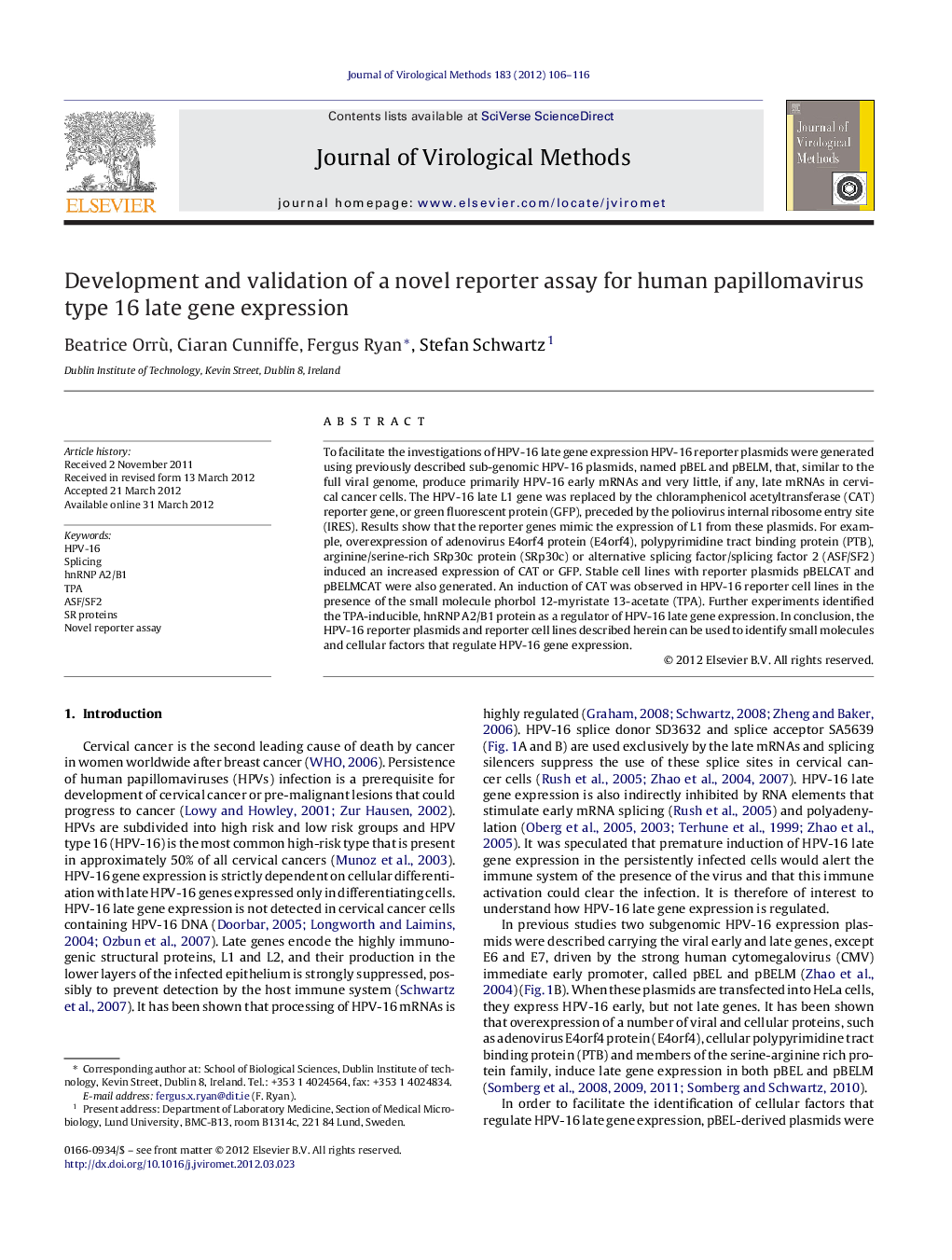| Article ID | Journal | Published Year | Pages | File Type |
|---|---|---|---|---|
| 3406763 | Journal of Virological Methods | 2012 | 11 Pages |
To facilitate the investigations of HPV-16 late gene expression HPV-16 reporter plasmids were generated using previously described sub-genomic HPV-16 plasmids, named pBEL and pBELM, that, similar to the full viral genome, produce primarily HPV-16 early mRNAs and very little, if any, late mRNAs in cervical cancer cells. The HPV-16 late L1 gene was replaced by the chloramphenicol acetyltransferase (CAT) reporter gene, or green fluorescent protein (GFP), preceded by the poliovirus internal ribosome entry site (IRES). Results show that the reporter genes mimic the expression of L1 from these plasmids. For example, overexpression of adenovirus E4orf4 protein (E4orf4), polypyrimidine tract binding protein (PTB), arginine/serine-rich SRp30c protein (SRp30c) or alternative splicing factor/splicing factor 2 (ASF/SF2) induced an increased expression of CAT or GFP. Stable cell lines with reporter plasmids pBELCAT and pBELMCAT were also generated. An induction of CAT was observed in HPV-16 reporter cell lines in the presence of the small molecule phorbol 12-myristate 13-acetate (TPA). Further experiments identified the TPA-inducible, hnRNP A2/B1 protein as a regulator of HPV-16 late gene expression. In conclusion, the HPV-16 reporter plasmids and reporter cell lines described herein can be used to identify small molecules and cellular factors that regulate HPV-16 gene expression.
► Construction of novel molecular tools to evaluate HPV-16 late gene expression. ► Generation of HPV-16 reporter plasmids and stable cell lines. ► Identification of TPA as a small molecule inducer of HPV-16 late gene expression. ► Identification of hnRNP A2/B1 as a novel regulator of HPV-16 late gene expression.
